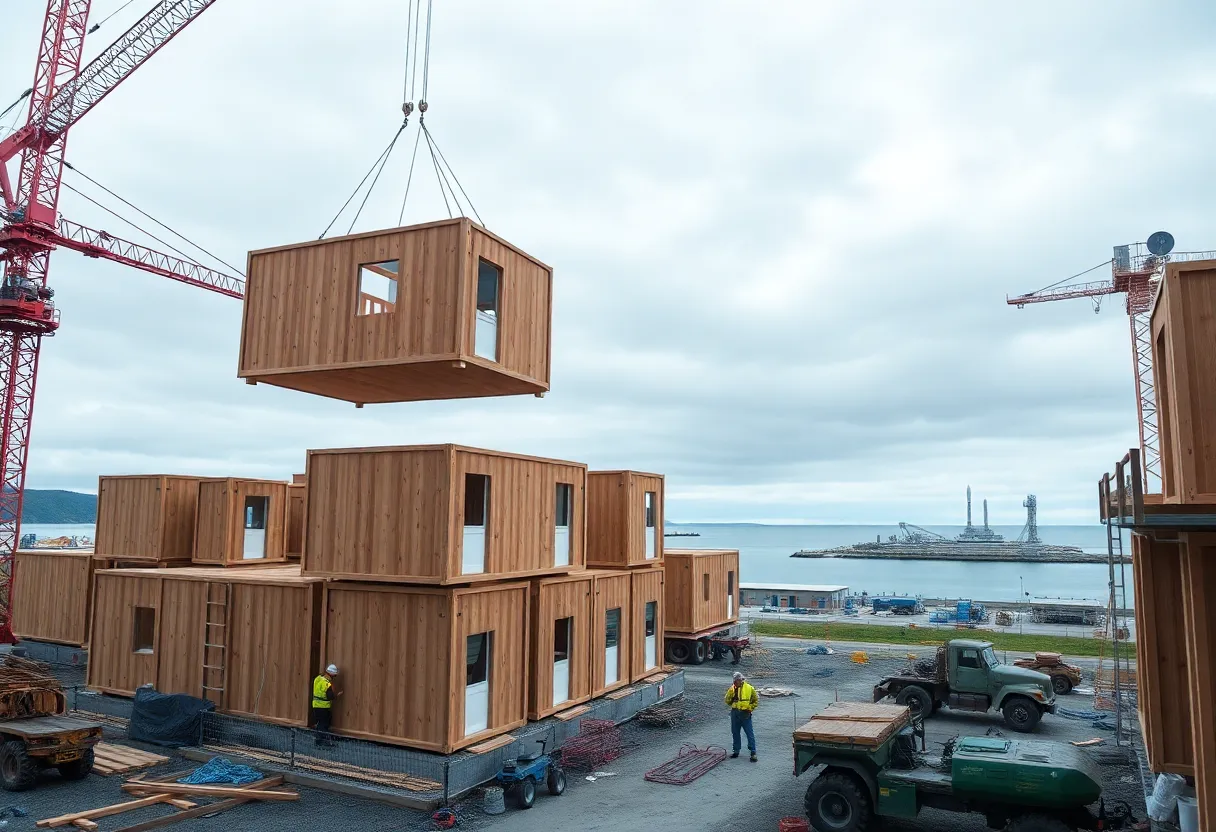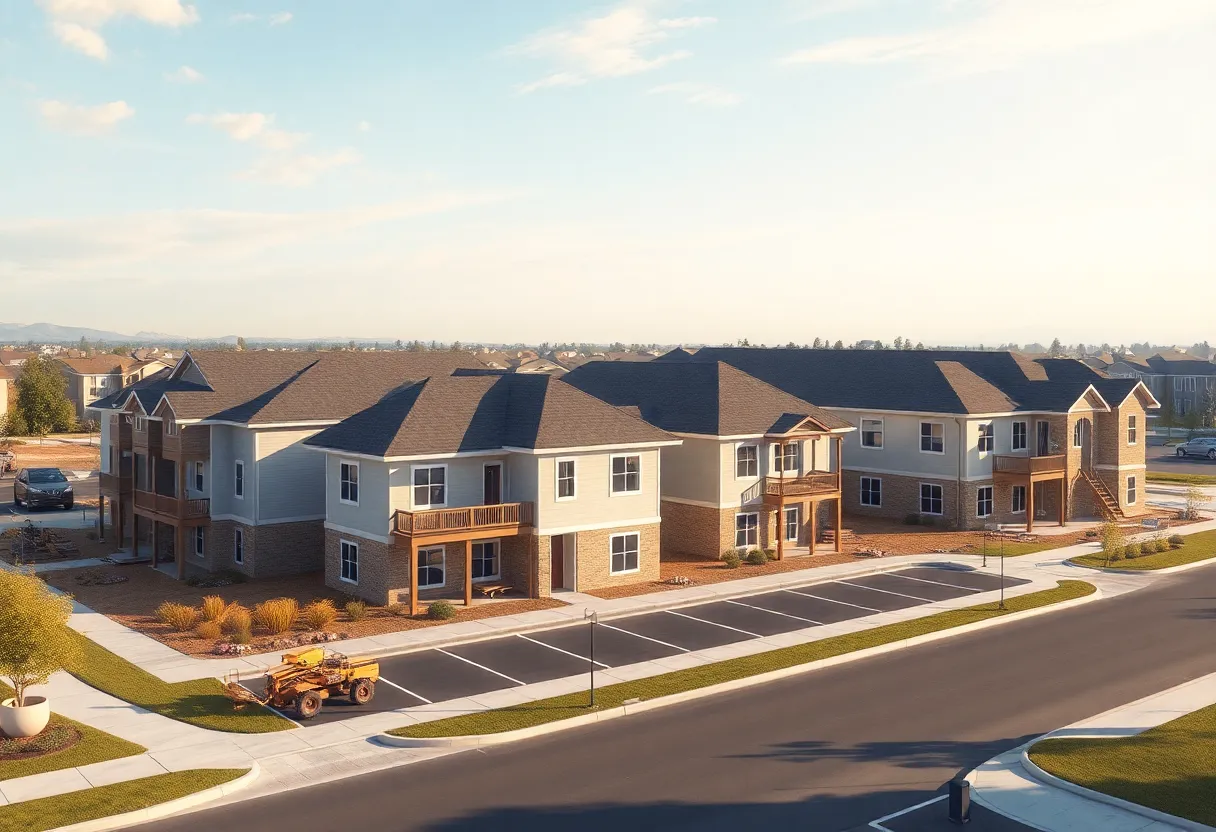Canada, August 19, 2025
News Summary
Canada’s housing sector is at a pivot point as affordability pressures persist despite modest productivity gains and faster modular build times. Builders report improved outcomes from AI, BIM and digital twins while offsite methods cut completion times and costs. At the same time, purpose-built rental development is cooling as institutional returns fall and financing tightens. Regional activity is uneven—Montreal and prairie centres see multi‑unit growth while Toronto and Vancouver face slumps. Atlantic provinces are refocusing immigration on key occupations, and a private spaceport project in Newfoundland signals new industrial investment alongside housing policy efforts to boost supply.
Canada’s housing crossroads and aerospace ambitions reshape growth prospects across regions
The national housing narrative centers on an affordability crisis in major markets, where Toronto and Vancouver still face lofty price tags even as demand cools. At the same time, a measurable construction productivity uptick offers an investment thread for real estate and construction players. A broad set of data shows that the Canada Construction Labour Productivity Index stood at 92.47 in March 2025, marking a 2.15% year-over-year gain from a 2007-based baseline of 100. Yet the country’s productivity remains below the U.S. according to OECD metrics, a gap widened by slow adoption of advanced technologies and a fragmented SME landscape.
Technology adoption trends are drawing significant attention. A survey of construction leaders indicates that AI, Building Information Modelling (BIM), and digital twins are deemed essential by about 90% of leaders, while roughly 81% of companies report measurable productivity gains from recent tech investments. The practical impact of this tech shift extends to reduced build times in modular and AI-enhanced workflows. In projects such as Regina’s Horse Dance Lodge, modular construction and related digital tools contributed to completing the build in 12 months.
Government programs have helped accelerate this shift. Modular construction and AI-driven design checks, combined with IoT-enabled sensor networks and digital twins, are reducing costly errors and enabling predictive maintenance—addressing labor shortages by shrinking on-site labor demands and improving workflow efficiency. For investors, early adopters of productivity-boosting technologies are positioned to outperform peers, according to models that link labor costs to housing affordability outcomes.
Policy and market dynamics converge with housing output goals. A federal housing plan of roughly $129 billion aims to double construction output to 500,000 units annually by 2030 and prioritizes modular construction and mass timber. Provincial measures include halving development charges for multi-unit housing and, in some cases, removing the GST on homes under $1 million. Regional dynamics diverge: Toronto and Vancouver show oversupply and price erosion, while Calgary and Montreal display more resilient demand and opportunity.
On the construction confidence front, the Canada Home Builders’ Association’s Housing Market Index sits near historically low levels, with builder confidence measured at 24.9 for single-family and 22.8 for multi-family segments. In the Prairie provinces, a surge in multi-family starts driven by rental demand and supportive policies is notable. Meanwhile, rental market dynamics are evolving: some markets in the Greater Toronto Hamilton Area now offer incentives such as two months’ free rent and free parking as developers respond to softer rental growth and rising financing costs.
In the private sector, some diversification moves are under way. RioCan, which shifted toward residential rental towers through its Living division since 2018, announced plans to largely exit residential development and to rely on outside investors for future projects while retaining land and expertise. The shift reflects investor caution on returns, with rental development yields sometimes as low as 4.5% and weaker financing conditions as interest rate cycles rise. Meanwhile, Starlight Investments has begun a new Victoria project to build 526 rental suites, underscoring ongoing appetite for purpose-built rental stock as a bulwark against a tight condo market.
Rental market signals have complicated the outlook. CMHC reported a surge in housing starts for July at 294,100 units on a seasonally adjusted annualized basis, a 3.7% rise from June and higher than many expectations. Yet in major centers, results were mixed: Montreal posted a spike in multi-unit starts; Toronto saw declines across both multi-unit and single-detached segments, and Ottawa–Gatineau and other centers varied. Analysts note the national results reflect decisions made months or years earlier while forward-looking permits suggest a cooling path into 2026 as population growth moderates and rents ease in several jurisdictions.
Beyond the housing market, Canada’s Atlantic region is becoming a focal point for labor migration and infrastructure investments. A package of Atlantic Immigration Program (AIP) adjustments prioritizes sectors such as healthcare, construction, and manufacturing in 2025, emphasizing employer-driven pathways to permanent residence. Provinces differ in their approach: Prince Edward Island prioritizes workers in certain high-demand sectors for the remainder of 2025; Nova Scotia targets workers facing expiring permits in healthcare and construction; Newfoundland and Labrador maintained an ongoing AIP with a simplified expression of interest model. New Brunswick expanded its intake in mid-2025, adding 1,500 spots to the provincial program. These policies aim to shore up regional demand and support projects across housing and energy, with AIP benefits including shorter processing times and LMIA-exempt work permits while PR applications are processed.
In parallel, Canada’s strategic space ambitions advanced with NordSpace beginning construction of the Atlantic Spaceport Complex (ASX) in Newfoundland and Labrador near St. Lawrence. The ASX is designed to support NordSpace’s Tundra orbital rocket and suborbital Taiga vehicle launches, with a plan to welcome other providers. The facility portfolio includes Space Launch Complex‑01 for orbital flights and Space Launch Complex‑02 for suborbital missions and space-domain awareness tracking. The project is “fully sourced and built from within Canada,” with in-house 3D‑printed Hadfield Mk III engines and parts sourced across the country. The first Taiga flight is slated as a suborbital test, with a second Taiga mission planned for the following year to demonstrate expanded capabilities, and NordSpace expects a broader timetable for Tundra’s first orbital flight in 2027. The initiative is paired with a broader national defense R&D agenda, including the SHARP program and associated research vehicles. The economic rationale cites job creation and a multi‑billion-dollar contribution to activity through 2035. A note of caution accompanies the development: a correction acknowledged that ASX was not Canada’s first commercial launch site, and Maritime Launch’s facility is part of the evolving launch landscape.
If these developments unfold as projected, Canada’s housing market could transform through technology-driven productivity gains, policy experimentation, and regional growth patterns. The path ahead features a spectrum of risks, including regulatory delays and persistent labor shortages, but also opportunities from public–private partnerships, streamlined permitting, and the continued expansion of modular and digital approaches in construction. Investors who align with tech-enabled firms, high-growth regions, and targeted public incentives may capture long‑term value as housing supply and space-related initiatives ramp up.
Frequently Asked Questions
What factors are driving Canada’s housing market transformation?
Key drivers include a persistent affordability challenge in major cities, regional demand shifts, productivity gains in construction technology, and government support for modular construction and mass timber. Policy initiatives aim to accelerate output and reduce build times, while market dynamics in rent and ownership influence investment returns.
How is construction productivity changing in Canada?
The Canada Construction Labour Productivity Index reached 92.47 in March 2025, reflecting a 2.15% year‑over‑year gain from the base year 2007. Adoption of AI, BIM, and digital twins is widely viewed as essential by industry leaders, with many firms reporting measurable gains from technology investments.
What is the Atlantic Immigration Program and which sectors are prioritized?
The AIP is an employer‑driven pathway to permanent residence for skilled workers and certain graduates who wish to settle in Atlantic provinces. In 2025, healthcare, construction, and manufacturing are among prioritized sectors, with provinces tailoring endorsement and processing rules to local labor demand.
What is NordSpace’s Atlantic Spaceport Complex, and what does it aim to do?
ASX is a Canadian‑based spaceport near St. Lawrence, NL, designed to support orbital and suborbital launches, with two launch complexes and domestic sourcing of components. It aims to host NordSpace’s Tundra orbital vehicle and Taiga suborbital missions, while also inviting other providers to use the facility.
How do modular construction and AI affect build times?
Modular construction and AI-enabled design checks can reduce build‑to‑occupancy times by up to 40%, with examples like Horse Dance Lodge illustrating rapid completion using offsite methods. Digital twins and IoT networks support predictive maintenance and risk management, further trimming delays and errors.
What are the investment implications for rental housing?
Rising costs and slower rent growth have challenged traditional rental yields, with some projects encountering returns around 4.5%. However, government incentives, land costs adjustments, and shifts toward mass timber and modular builds could improve project economics over time, especially for developers who adopt technology early and pursue PPPs.
What is happening with CMHC housing starts and permitting?
CMHC data show July starts at 294,100 units (SAAR), up 3.7% from June, with varied performance across centers. While some markets report substantial multi‑unit increases, others in Toronto and Vancouver face declines. Building permits suggest starts may stay near current levels in the near term, with cooling anticipated in 2026 as population growth slows.
What role do provincial policies play in housing and immigration?
Provincial measures, such as halving DCs for multi‑unit housing and targeted AIP endorsements, shape development economics and labor supply. The interplay of provincial programs with federal pathways creates a nuanced landscape for developers, employers, and prospective migrants seeking long‑term residency.
| Feature | Description | Key datapoints |
|---|---|---|
| Housing affordability | Persistent high prices in major cities; policy steps aim to increase supply and reduce costs | Toronto/Vancouver price erosion; development charges policies; GST exemptions for some homes |
| Productivity and technology | Adoption of AI, BIM, digital twins, and modular methods to boost efficiency | Index at 92.47 (Mar 2025); +2.15% YoY; 90% leaders say essential; 81% report gains |
| Regional demand | Contrasting dynamics across provinces and cities; Prairie surge in multi‑family starts | Toronto/Vancouver oversupply; Montreal/Calgary resilient; Prairie multi‑family starts up |
| Policy innovations | Modular construction, mass timber, and housing incentives to accelerate output | Build Canada Homes plan; 500,000 units/year by 2030 target; DC halving; GST exemptions |
| Rental market dynamics | Rent incentives and slower growth affecting yields; supply adjustments underway | Rents below projections in some markets; 4.5% yields cited; Starlight Victoria project |
| Atlantic immigration | Labor migration policy prioritizes healthcare, construction, manufacturing; faster pathways | AIP allocations and sector priorities; NB expansion; NL EOI model |
| NordSpace and spaceports | ASX development in NL, supported by domestic supply chains and local facilities | Taiga suborbital; Terra Nova satellite; Tundra target 2027; 650 jobs, $2.5B activity |
Deeper Dive: News & Info About This Topic
Additional Resources
- The Globe and Mail: Rental-apartment construction, developers and market shifts
- Wikipedia: Construction industry of Canada
- MSN: Prairie housing starts drive Canada-wide residential construction increase
- Google Search: Canada housing starts prairie provinces 2025
- Space.com: Canada’s 1st commercial spaceport is under construction
- Encyclopedia Britannica: Spaceport
- CIC News: Atlantic Immigration Program — priorities for 2025
- Google Scholar: Atlantic Immigration Program 2025 labour market
- ConstructConnect: Canada’s in need of a contech and proptech revolution
- Google News: contech proptech Canada 2025





